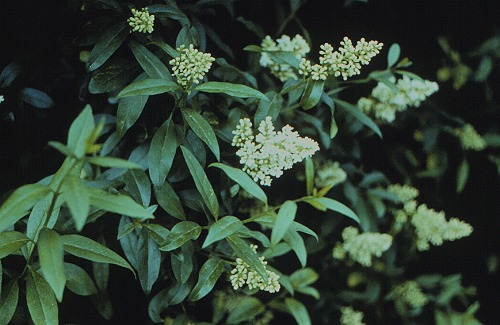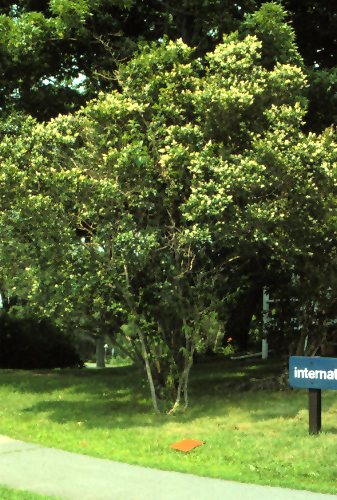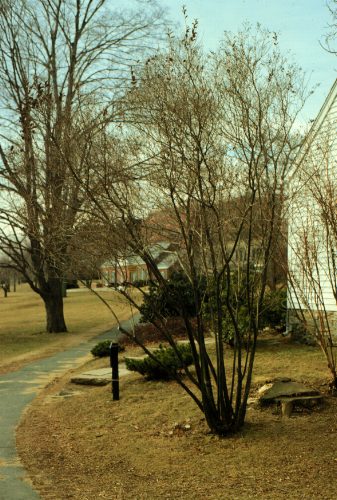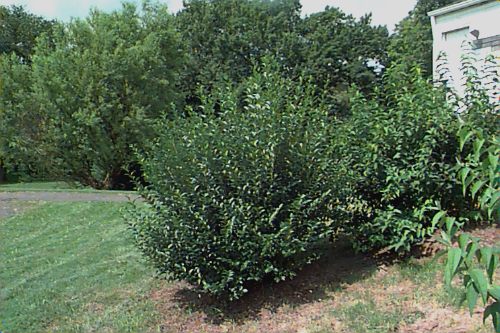Ligustrum vulgare
European Privet, Common Privet
Oleaceae
ExpandHabitat
- native to Europe and northern Africa
- hardy to zone 4
- this species is widely naturalized throughout the eastern half of the United States
- Special Note: This species has demonstrated an invasive tendency in Connecticut, meaning it may escape from cultivation and naturalize in minimally managed areas. For more information, .
Habit and Form
- a medium sized deciduous shrub
- stout multibranched shrub
- 12' to 15' tall
- equal width
- coarse texture
- fast growth rate
Summer Foliage
- simple, deciduous leaves
- opposite leaf arrangement
- lanceolate leaf shape
- 1" to 2.5" long
- smooth leaf margins
- dark green leaf color
Autumn Foliage
- leaves turn purplish
- not showy
Flowers
- white, terminal panicles
- strong odor
- blooms in mid-June
- 1" to 3" long
Fruit
- black fruit
- 0.33" drupe
- ripens in early September
- persists
Bark
- thin stems
- gray-brown bark color
- smooth
Culture
- transplants easily
- extremely adaptable
- full sun to partial shade
- prune after flowering
Landscape Use
- screen
- border
- hedge
- foundation planting
Liabilities
- anthracnose twig blight
- canker
- powdery mildew
- leaf spot
- aphids, leaf miners, mites and whiteflies
ID Features
- white fragrant flowers
- black fruit
- opposite leaf arrangement
- glossy entire leaves
- leaves have waxy appearance
- lenticels
- light brown bark
Propagation
- by cuttings
- by seed
Cultivars/Varieties
'Cheyenne' - Marketed as the hardiest form, this plant still may fail in USDA zone 4 or colder. It retains its leaves late into the season.
'Densiflorum' - This plant maintains an upright form without pruning, making it suitable hedge material.
'Lodense' - A dwarf, compact plant, this cultivar only reaches 5' tall after many years. Observers have reported, however, that it is plagued by an incurable disease.
'Pyramidale' - As this cultivar assumes a somewhat pyramidal habit, it is commonly used as a hedge plant.




